
This is sheet music that has been color coded to match the handbells in the classroom handbell set.
- Subject:
- Performing Arts
- Material Type:
- Lesson
- Author:
- Rachel Finley
- Date Added:
- 04/05/2023

This is sheet music that has been color coded to match the handbells in the classroom handbell set.

The Three Little Pigs is told orally with pictures only and the children are asked to make predictions based on text features. At the end, the children are asked to compare the houses from the story to where they live. The children will enjoy a puppet show of the Three Little Pigs. Teachers can use this video to teach a sequence of events and story elements.
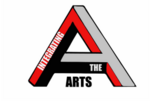
This resource was created by Ross Renfo, in collaboration with Dawn DeTurk, Hannah Blomstedt, and Julie Albrecht, as part of ESU2's Integrating the Arts project. This project is a four year initiative focused on integrating arts into the core curriculum through teacher education, practice, and coaching.
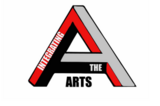
This resource was created by Andrew Halsey, in collaboration with Dawn DeTurk, Hannah Blomstedt, and Julie Albrecht, as part of ESU2's Integrating the Arts project. This project is a four year initiative focused on integrating arts into the core curriculum through teacher education, practice, and coaching.
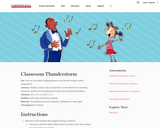
Students create a class composition of a thunderstorm by exploring expressive qualities of crescendo/decrescendo and accelerando/ritardando

About the Arts, Care & Connection Lesson Collection:Arts for Learning Northwest collaborated with Oregon teaching artists on this collection of arts integration modules designed for K-5 students, with integrated social emotional learning content in the areas of dance, visual arts, theater, and music.

About the Arts, Care & Connection Lesson Collection: Arts for Learning Northwest collaborated with Oregon teaching artists on this collection of arts integration modules designed for K-5 students, with integrated social emotional learning content in the areas of dance, visual arts, theater, and music.
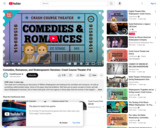
This week we're continuing our discussion of William Shakespeare and looking at his comedies and romances. As well as something called problem plays. Some of his plays, they had problems. We'll also put on pants, escape to forest, and talk about Shakepeare's heroines, lots of whom had quite a bit more agency in these plays than the women in the tragedies had.
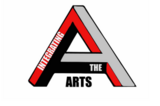
This resource was created by Jennifer Trenhaile, in collaboration with Dawn DeTurk, Hannah Blomstedt, and Julie Albrecht, as part of ESU2's Integrating the Arts project. This project is a four year initiative focused on integrating arts into the core curriculum through teacher education, practice, and coaching.
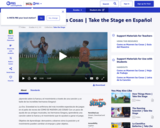
¡Aprende sobre la fuerza y el movimiento a través de una canción y un baile de los increíbles hermanos Gregory!
¡La Sra. Gravedad es la anfitriona del más increíble espectáculo de juegos en el patio de recreo de COMO SE MUEVEN LAS COSAS! Con un poco de ayuda de sus amigos musicales, los hermanos Gregory, aprenderás una canción sobre la fuerza y el movimiento que te ayudará a ganar el juego.
Objetivo de Aprendizaje: demuestre y observe cómo la posición y el movimiento pueden cambiar al empujar y jalar objetos.
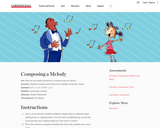
Students compose and notate short melodies using their names.

This class explores composition and arrangement for the large jazz ensemble from 1920s foundations to current postmodern practice. Consideration given to a variety of styles and to the interaction of improvisation and composition. Study of works by Basie, Ellington, Evans, Gillespie, Golson, Mingus, Morris, Nelson, Williams, and others. Open rehearsals, workshops, and performances of student compositions by the MIT Festival Jazz Ensemble and the Aardvark Jazz Orchestra.
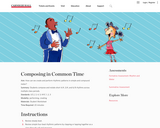
Students compose and notate short 4/4, 3/4, and 6/8 rhythms across multiple class periods.
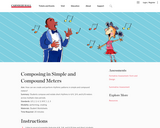
Students compose and notate short rhythms in 4/4, 3/4, and 6/8 meters across multiple class periods.

This class explores sound and what can be done with it. Sources are recorded from students’ surroundings - sampled and electronically generated (both analog and digital). Assignments include composing with the sampled sounds, feedback, and noise, using digital signal processing (DSP), convolution, algorithms, and simple mixing. The class focuses on sonic and compositional aspects rather than technology, math, or acoustics, though these are examined in varying detail. Students complete weekly composition and listening assignments; material for the latter is drawn from sound art, experimental electronica, conventional and non-conventional classical electronic works, popular music, and previous students’ compositions.
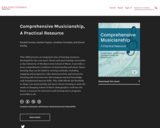
This OER presents an integrated suite of learning resources developed for the core music theory and musicianship curriculum at the University of Northern Iowa School of Music. It provides a more comprehensive symbiosis of musicianship and music theory learning than can be found in existing textbooks, including engaging and progressive video demonstrations and interactive listening and vocal exercises that integrate musical knowledge with foundational musical skills. This OER affords the flexibility to shape core musicianship and music theory learning to meet the needs of changing School of Music demographics well into the future, a resource for innovative and inviting music programs accessible to all.
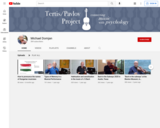
This YouTube channel hosts a series of short (about 15 min) talks and performances for the Pavlov/Tertis Project, which explores connections between music and psychology. The talks were written and delivered by Michael Domjan, Professor of Psychology at the University of Texas, who is an internationally recognized expert in conditioning and learning. Dr. Domjan also received training as a violist in the preparatory division of the Juilliard School of Music. In this series of videos, he combines his knowledge of psychology with his knowledge of music. Topics include How is psychology relevant to music, Neuroscience and music, Habituation and sensitization in the music of J. S. Bach, Types of memory in musical performance, Why is it harder to teach playing the violin. than playing baseball, What is a Tertis viola?, How is Pavlovian conditioning relevant to music?, Talent vs practice in musical expertise, Why is it important to practice a musical instrument, and What I learned in a music conservatory that made me a better scientist.
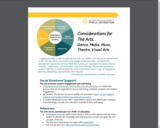
The document provides overview information about the importance of arts education and its implementation in K12 schools.
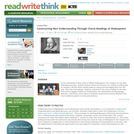
After reading "The Tempest" or any other play by William Shakespeare, students work in small groups to plan, compose, and perform a choral reading based on a character or theme.

About the Arts, Care & Connection Lesson Collection: Arts for Learning Northwest collaborated with Oregon teaching artists on this collection of arts integration modules designed for K-5 students, with integrated social emotional learning content in the areas of dance, visual arts, theater, and music.